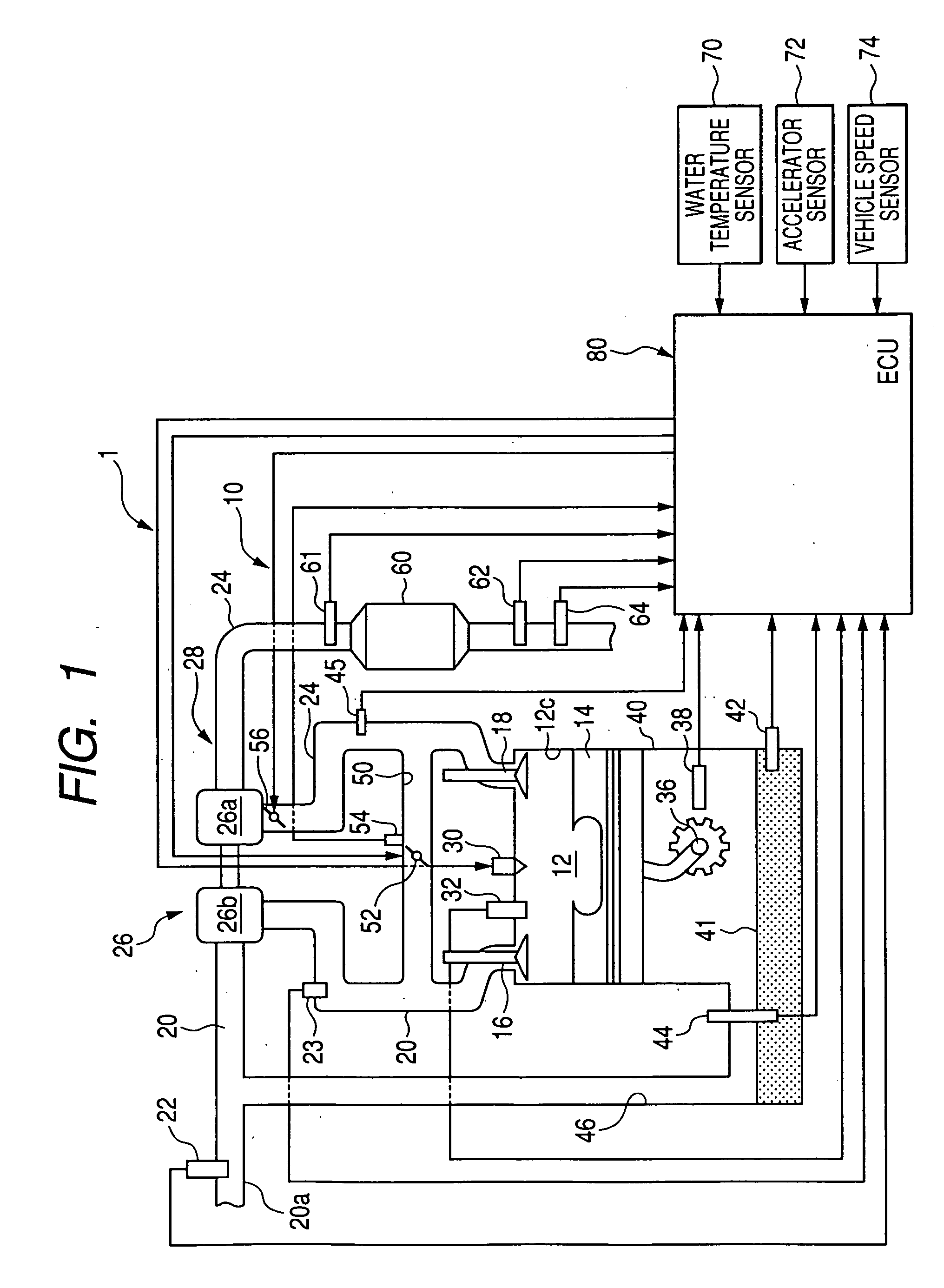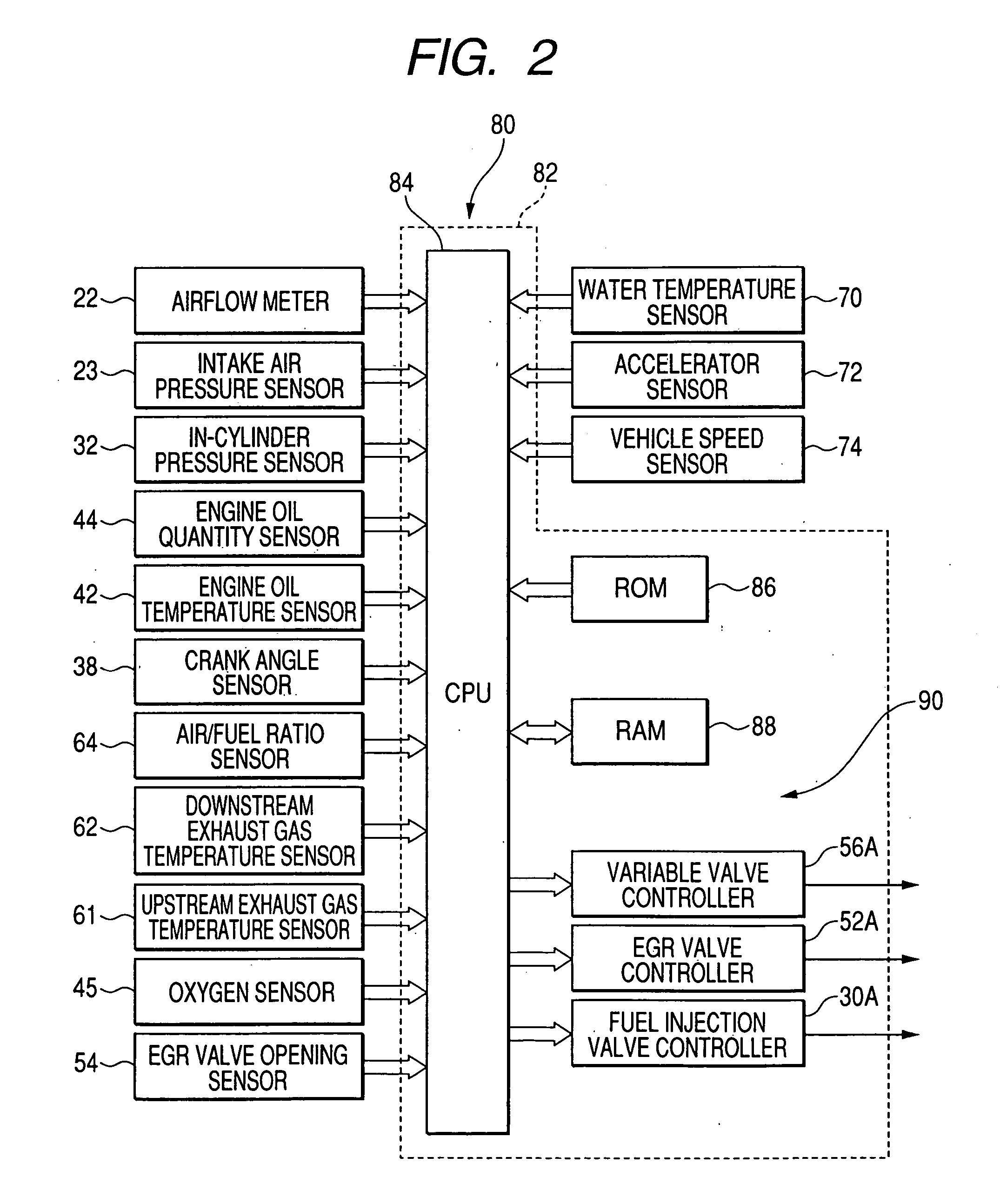Engine control system and engine control method
a control system and engine technology, applied in the direction of electric control, speed sensing governors, instruments, etc., can solve the problems of combustible components, deterioration of control accuracy of engine output, and difficulty in detecting the quantity of combustible components in intake air resulting from combustible components, so as to avoid lubrication defects and overrunning of engines, simple and effective manner
- Summary
- Abstract
- Description
- Claims
- Application Information
AI Technical Summary
Benefits of technology
Problems solved by technology
Method used
Image
Examples
first embodiment
[0133] Now, an engine control system of a first embodiment according to the present invention applied to a diesel engine is described below in detail with reference to FIGS. 1 to 6C of the accompanying drawings.
[0134]FIG. 1 is a block diagram showing an overall structure of the engine control system common to the first embodiment to a tenth embodiment. Thus, the engine control systems of the first to tenth embodiments are described below with reference to the overall structure of the engine control system shown in FIG. 1.
[0135] As shown in FIG. 1, a diesel engine 10 comprises a combustion chamber 12 in which a piston 14 is slidably disposed. The combustion chamber 12 has an intake port 12a and an exhaust port 12b in which an intake valve 16 and an exhaust valve 18 are operatively disposed, respectively. The intake port 10a is connected to an intake air passage 20 acting as an intake air system, supplying intake air to the combustion chamber 12, which has an upstream 20a on which a...
second embodiment
[0206] An engine control system of a second embodiment according to the present invention is described below in detail with reference to FIGS. 1, 2 and 7. The engine control system of the second embodiment differ from that of the first embodiment in that the CPU 84 is programmed to calculate a combustible component quantity of intake air in further increased accuracy on the basis of a learning value in a manner described below in detail.
[0207] With the first embodiment, the CPU 84 has been programmed to execute the operations for calculating the combustible component quantity of intake air, reflecting the combustible components contained in engine oil 41 inside the crankcase 40, on the basis of the deviation between the basic injection quantity and the actually commanded fuel injection quantity during the operation in idling stabilizing control.
[0208] However, a univocal determination of the combustible component quantity of intake air on the basis of the deviation between the bas...
third embodiment
[0219] An engine control system of a third embodiment according to the present invention is described below in detail with reference to FIGS. 1, 2, 8 and 9. With the third embodiment, the engine control system takes the form of the same structure as that of the first embodiment except for several features and the present embodiment is described below with reference to the diesel engine 10 shown in FIGS. 1 and 2 with a focus on such several features.
[0220] With the engine control system of the third embodiment, the CPU 84 is programmed to execute a basic sequence of operations, shown in FIG. 8, for calculating a combustible component quantity of intake air reflecting the combustible components prevailing in the crankcase 40. That is, the CPU 84 is programmed to repeatedly execute such operations for a given cycle.
[0221] In addition, the same steps as those shown in FIG. 3 bear like reference numerals in FIG. 8 for the sake of convenience.
[0222] Before entering into a detailed desc...
PUM
 Login to View More
Login to View More Abstract
Description
Claims
Application Information
 Login to View More
Login to View More - R&D
- Intellectual Property
- Life Sciences
- Materials
- Tech Scout
- Unparalleled Data Quality
- Higher Quality Content
- 60% Fewer Hallucinations
Browse by: Latest US Patents, China's latest patents, Technical Efficacy Thesaurus, Application Domain, Technology Topic, Popular Technical Reports.
© 2025 PatSnap. All rights reserved.Legal|Privacy policy|Modern Slavery Act Transparency Statement|Sitemap|About US| Contact US: help@patsnap.com



